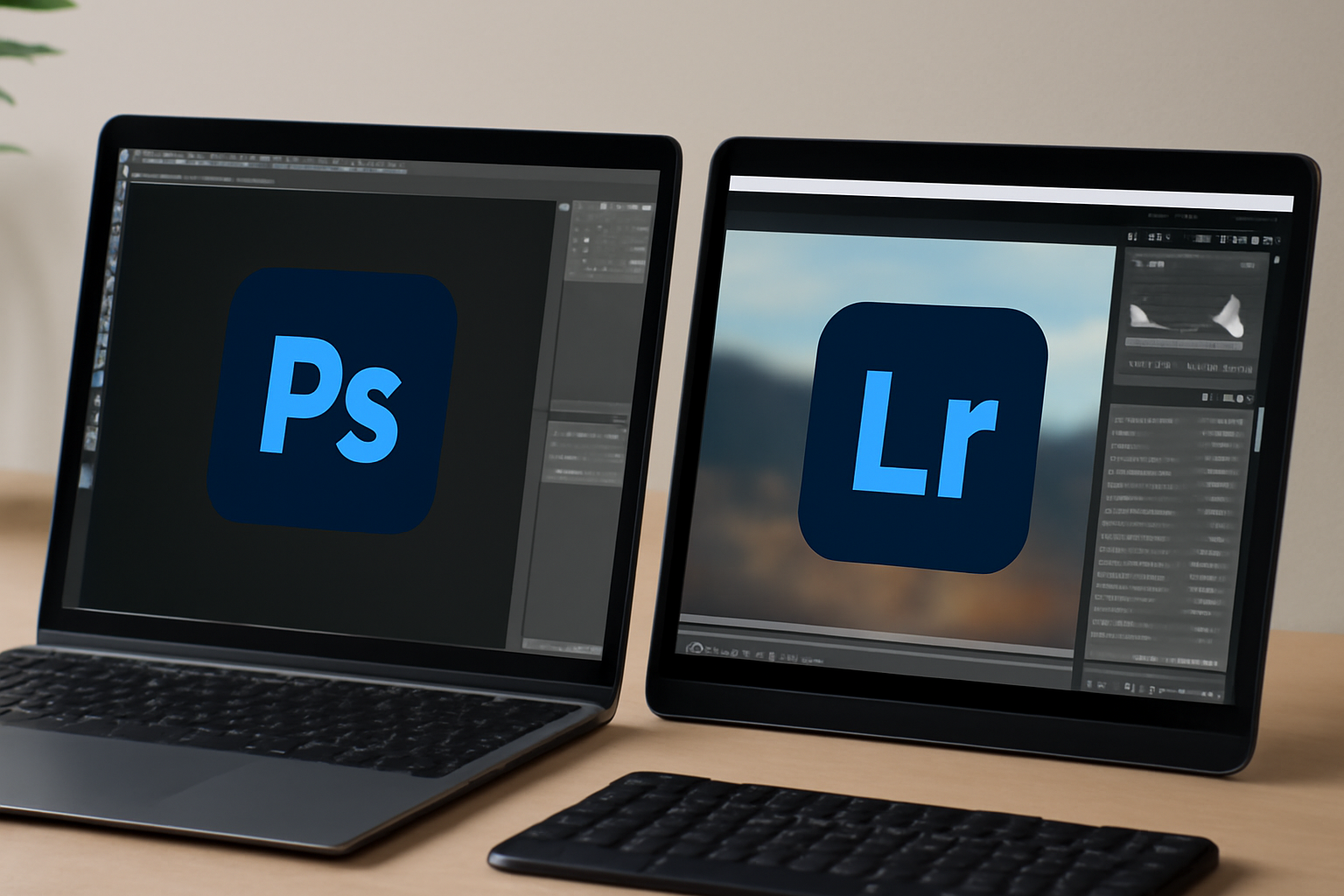Choosing the right photo editing tool is essential for photographers, whether you’re a beginner or a seasoned pro. Two of the most popular options available are Adobe Photoshop and Adobe Lightroom. Each tool has its strengths, and knowing which one to choose can make a significant difference in your workflow. In this article, we’ll explore the features, pros, and cons of both tools to help you decide which one is the best fit for your photography needs.
1. What is Adobe Photoshop?
An Overview of Photoshop
Adobe Photoshop is a pixel-based image editing software that offers an incredibly detailed and versatile set of tools for photo manipulation and graphic design. It’s widely regarded as the industry standard for image editing, used by professionals across various fields, from photographers to designers.
Key Features of Photoshop
Some of the key features of Photoshop include:
- Advanced Retouching and Restoration: Photoshop excels in detailed edits, such as removing blemishes, fixing wrinkles, or correcting perspective distortions.
- Layer-based Editing: Layers allow for non-destructive editing, making it easy to make changes without affecting the original image.
- Complex Selections: The software provides advanced selection tools, which allow you to isolate areas of the image with incredible precision.
- Compositing and Manipulation: Photoshop is renowned for its ability to combine multiple images into one or manipulate images in creative ways.
- Text and Graphic Design: Photoshop is also highly used for graphic design, with tools for adding and manipulating text and shapes.
2. What is Adobe Lightroom?
An Overview of Lightroom
Adobe Lightroom is primarily focused on non-destructive editing, allowing photographers to make adjustments to their photos without permanently altering the original image. Lightroom is perfect for photographers who need to manage large quantities of photos and make global adjustments quickly.
Key Features of Lightroom
Some key features of Lightroom include:
- Non-Destructive Editing: Lightroom preserves the original file while storing all edits in the software. This allows for easy adjustments and reversion to the original at any time.
- Cataloging and Organization: Lightroom offers powerful tools for organizing, rating, and tagging photos, making it ideal for photographers who manage large image libraries.
- Batch Editing: Lightroom enables you to apply edits across multiple photos simultaneously, saving time on large shoots or projects.
- Easy Exposure Adjustments: Lightroom’s simple interface makes it easy to adjust exposure, contrast, highlights, shadows, and more with just a few clicks.
- Presets: Lightroom offers a wide variety of presets, which allow photographers to apply specific looks or styles to photos with one click.
3. Photoshop vs. Lightroom: Key Differences
1. Editing Workflow
One of the major differences between Photoshop and Lightroom is their approach to editing:
- Photoshop is ideal for pixel-level editing, offering detailed manipulation of individual elements within the photo.
- Lightroom, on the other hand, is more geared towards global adjustments, making it ideal for adjusting exposure, color balance, sharpness, and other aspects of an image as a whole.
When to Choose Photoshop for Editing
- When you need advanced retouching or image manipulation, such as removing backgrounds, adding special effects, or adjusting pixel-level details.
- If you’re working with complex compositions or need to work with layers for different elements within a photo.
When to Choose Lightroom for Editing
- When you need to process large numbers of images quickly.
- If you’re looking for non-destructive editing with the ability to revert any changes at any time.
- If your focus is on color correction, exposure adjustments, and global image enhancements without diving into pixel manipulation.
2. Speed and Efficiency
- Lightroom is faster for batch editing and organizing large collections of photos, as it’s designed specifically for photographers who need to handle lots of images.
- Photoshop, while powerful, may be slower for batch editing, as it is more focused on detailed, individual image manipulation.
3. File Management
- Lightroom offers extensive file management tools, including keywording, tagging, and rating, making it easier to organize large photo libraries.
- Photoshop lacks a built-in cataloging system, so file management in Photoshop is done manually or through a third-party application.
4. Price and Value
- Lightroom is more affordable for those who need a straightforward photo editing solution. It’s available via Adobe’s Photography Plan, which includes both Lightroom and Photoshop for a lower monthly cost.
- Photoshop, due to its advanced features, comes at a higher price point. However, it offers extensive editing capabilities for professionals who need detailed and creative control over their photos.
4. Which Tool is Best for You?
Choosing Based on Your Needs
- For Professional Photographers: If you’re focused on high-end retouching, working with large print sizes, or need to manipulate individual elements in a photo, Photoshop is the best choice.
- For Enthusiasts or Beginners: If you need a more straightforward solution for editing your photos, organizing them, and making quick global adjustments, Lightroom is ideal.
When Photoshop is Best
- If you need to do complex manipulations, like changing backgrounds, retouching, or compositing multiple images.
- If you’re working with graphic design, illustrations, or fine art photography that requires pixel-level editing.
When Lightroom is Best
- If you’re dealing with a large volume of photos and need to streamline your workflow with batch editing and easy organization.
- If you’re a landscape photographer, portrait photographer, or someone who focuses on improving color and exposure without pixel-level detail.
5. Conclusion: Photoshop or Lightroom?
Both Photoshop and Lightroom have unique features that serve different needs in the world of photography. Photoshop excels at detailed photo manipulation and creative control, while Lightroom shines with its ease of use, speed, and batch editing features.
Ultimately, the best tool depends on your photography style and needs. If you are working on large collections of photos and want an efficient editing workflow, Lightroom is the ideal choice. If your work requires heavy manipulation and pixel-perfect edits, Photoshop is the way to go.











